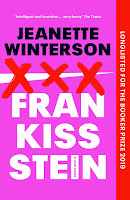The World of Harry Potter. Not the theme park, but the way characters from the books have entered into the real world, applying to a non Harry Potter phenomena. So rather than calling someone a muggle, and then having to explain the word and where it came from, someone might use the name without having read the books and its origin.
I'm referring to Voldemorting, which Macmillan Dictionary has listed on it's open dictionary in a submission by Kerry Maxwell (United Kingdom 02/09/2019) as:
deliberately avoiding the use of a particular name or key word on social media
Voldemorting is anti SEO, because it is based on deforming keywords with metaphors and comparisons, so that search engines do not find that content.
The word was first described by by Emily van der Nagel, a social media academic and whose PhD covered pseudoanonymity, and a lecturer at Monash University in Australia. She credits coinage of the term itself to a 2013 discussion forum comment by user Eugene.
The character Voldemort in the books is so feared that his name can not be said and he is referred to as ‘He Who Must Not Be Named’. The term can be used as a noun, for example 'Cheeto' for a certain orange politician and reality tv star is a Voldemort. An example that perfectly shows why someone might want to rant about a personality without raising their hashtag or internet trending popularity.
Emily van der Nagel is interviewed by Mediaverse about the tactic at https://mediaverse.com.au/voldemorting-social-media-trend/
All good things come in threes, the adage states. I'm currently reading "Because Internet: understanding how language is changing" by Gretchen McCulloch. It's fascinating and recommended for anyone who loves words. So far the book hasn't mentioned Voldemorting but she has covered it in a column for Wired https://www.wired.com/story/voldemorting-ultimate-seo-diss-resident-linguist/.
That tenuous link makes two. Which leaves the third.
Catalonians celebrate Christmas much like other Christian countries — presents, a special meal, nativity scenes. Except... well... except that, along with a manger, three kings, the baby Jesus, Joseph and Mary, perhaps the odd donkey, Catalonians add an extra figure.
This figure is usually hidden in a corner of the barn. He is known as “El Caganer” and is not in the Bible as far as I know. Google translate won't help you with this one, but a good translation would be... um, the defecator. I am tempted to say I sh** you not.
Yes, for this little chap in his traditional red hat has his breeches at half mast, and is crouching over an oversized pile of his own poo. Really.
What has this got to do with Harry Potter you say? Well the tradition of the figure dates back 300 years, a more recent addition to it has been the creation of "guest" caganers. Being featured is apparently a sign of honour if you're Catalonian. Much like being on The Simpsons or Extras (incidentally Thomas Pynchon has been on the Simpsons twice, which coincidentally is the number of known photos of him as an adult, so a visual Voldemort? https://www.theatlantic.com/culture/archive/2013/06/thomas-pynchon-back-new-york/313257/).
This year, as you've probably guessed, Harry Potter makes an appearance. Well, not exactly how you would expect. Not the star himself, not a range of characters, and no, not Voldemort either. The family firm of Caganer.com (https://www.caganer.com/en/info/who-we-are-4) have created a Hermione Granger. Just Hermione. Shitting herself.
See for yourself https://www.caganer.com/en/hermione-harry-potter-1102/295, and more on scatological Catalonian Christmas traditions https://www.dailynews.com/2014/12/16/in-spain-pooping-ceramic-figures-of-famous-people-are-a-thing-really/
Image courtesy of our very own beta tester Poppy who we felt deserved an early Christmas present. Voldy courtesy of https://www.flickr.com/photos/pagedooley/2783375829/sizes/l/


















